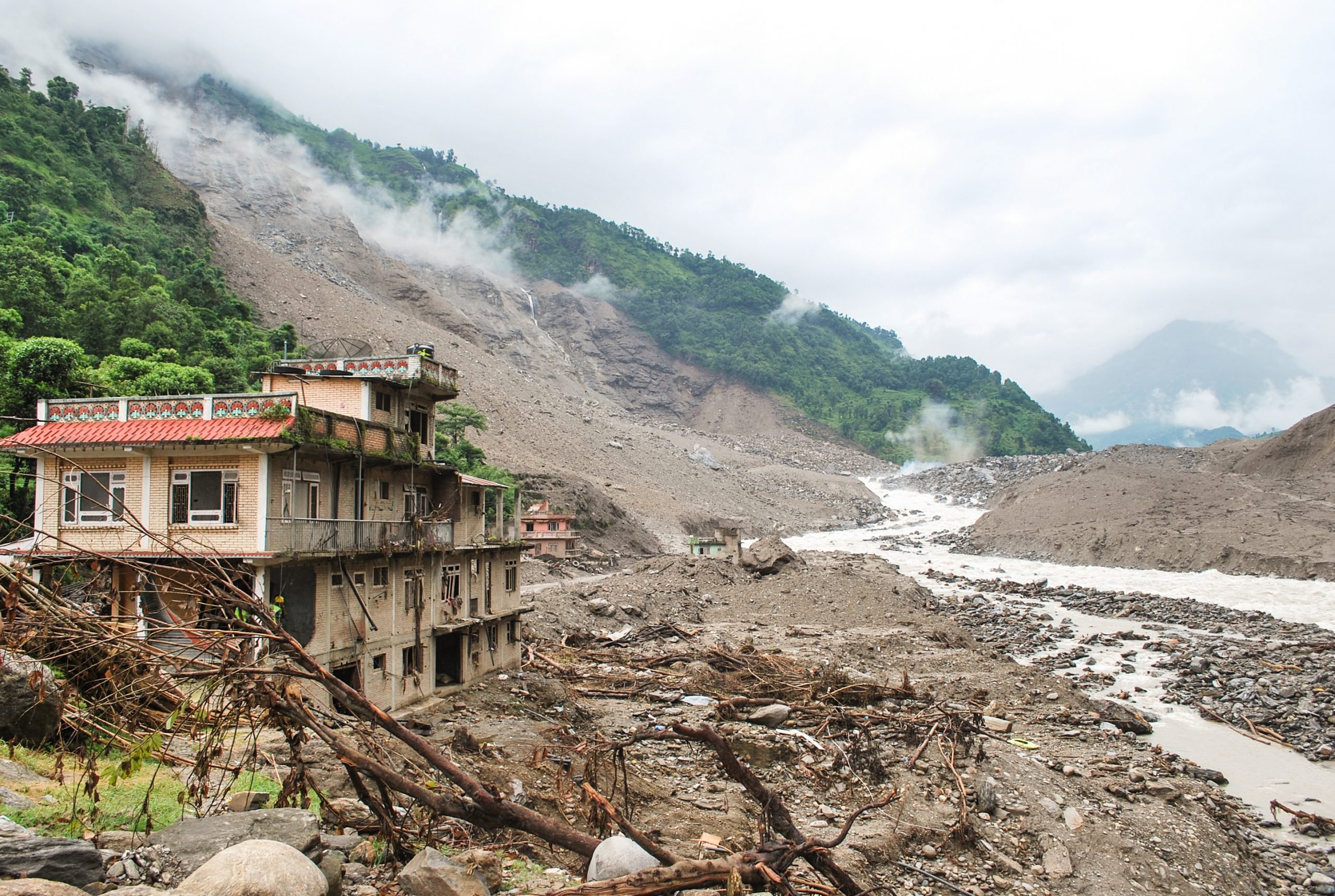There is a beauty and peacefulness around the landslide site, and it belies the violence that killed 156 people on the banks of Nepal’s Sunkoshi River recently. A mud-brown gash several hundred metres long mars the otherwise lush green terraced rice paddies covering the steep slopes on the other side of the river. The debris of soil and rock that slid and tumbled down one such slope in the early hours of August 2 blocked the river below, creating a lake that stretches for several kilometres upstream. From a distance the lake seems placid, but the pressure of water building up behind the precarious blockage could release a flash flood.
Although landslides are common in mountainous Nepal, this one was huge and raised questions of what other calamities climate change has in store for the Hindu Kush-Himalaya region. That, in turn, raises questions of resilience and responsiveness. Smaller slides and tremors presaged this landslide, yet authorities did not act on reports from locals that something was amiss.
Apart from the tragic loss of life and livelihoods, the landslide damaged a hydropower station downstream, cutting Nepal’s hydropower capacity by 10%.
Political repercussions
The disaster also has transboundary implications. Nepal is a long but narrow country, nestled between China to the north and India to the south. The Sunkoshi landslide occurred in a district abutting the border with China, but has consequences for both neighbours. It has created a delicate political situation needing careful diplomacy.
The landslide blocked the main highway between China and Nepal, stranding hundreds of pilgrims travelling to the holy Mount Kailash in Tibet. For India, the main concern is with the stability of the blockage and the possibility of flash flooding in downstream Bihar province should the dam of debris be breached. Nepali disaster response teams have been careful to dismantle the blockage slowly with small, controlled blasts in order to maintain a steady flow of the river. Any flash flood would be dangerous not only for Bihar but of course for Nepali communities along the Sunkoshi too.
But no matter how painstaking the disaster management response has been, a deluge of suspicion and mistrust has begun to flow between the two nations. Careless journalism on both sides leads the reader into thinking that flooding – a natural part of Himalayan river systems – is not only the fault of the country on the other side of the border, but is perpetrated maliciously. In India headlines tell of Nepalis opening floodgates; while in Nepal similar headlines accuse India of shutting barrages to create rapid pooling of water upstream.
The perpetuation of these misunderstandings creates further mistrust at every level and stymies meaningful cooperation on the shared waters of the region. After all, it is difficult to enter into joint projects, river sharing agreements, or a programme of information exchange when there is a persistent perception that the other side is not acting in good faith.
The culture of mistrust, however, maybe slowly changing.
It was a fortuitous coincidence that the day following the Sunkoshi landslide India’s recently elected Prime Minister, Narendra Modi, came to Kathmandu. It was the first time in 17 years that an Indian prime minister visited Nepal on a state visit, and the trip highlighted that political mistrust is a weed that festers when it is neglected by leaders. After nearly two decades of this sort of political neglect, the response in Nepal to the Indian Prime Minister was overwhelmingly positive and optimistic about future relations, especially in regard to shared water issues such as hydropower development.
Modi’s visit to Nepal was only his second official trip abroad since becoming Prime Minister, and portends a greater focus on regional cooperation; his first official state visit was to Bhutan, and he pointedly invited to his inauguration heads of state from the member countries of the South Asian Association for Regional Cooperation (SAARC). The concerted effort to mend fences with neighbours is laudable and likely to positively affect the governance of shared river basins. After all, nobody can dispute the importance of the region’s rivers, and most would agree that there is more to gain for all through collaborative action than unilateral solutions.
But it must also be remembered that transboundary water cooperation is complex; it should begin small and local, focusing on specific, meaningful, tangible, and achievable issues – like those of the Sunkoshi landslide; disaster relief, flood warning systems, or climate change adaptation.
Paula Hanasz is a PhD student at Australian National University. She can be contacted at [email protected]
